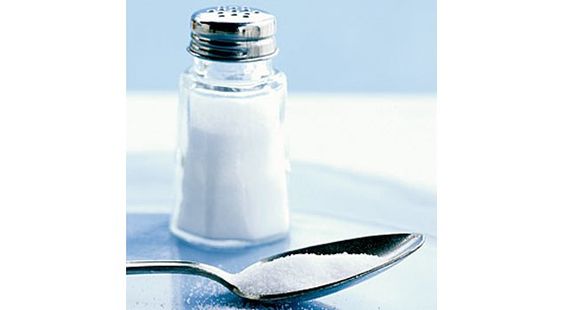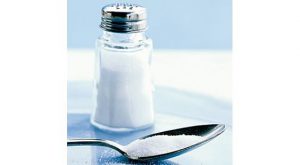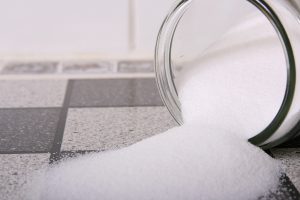
What’s Shaking…Too Much Salt
 March 10 – 16, 2017 is National Salt Awareness Week. Salt is the main source of sodium in the American diet. Sodium is a mineral only needed by the body in small amounts. It is found in foods, mostly as sodium chloride.
March 10 – 16, 2017 is National Salt Awareness Week. Salt is the main source of sodium in the American diet. Sodium is a mineral only needed by the body in small amounts. It is found in foods, mostly as sodium chloride.
Sodium has an important role in maintaining good health, however, over-consumption of sodium may lead to chronic diseases. According to the American Heart Association, Americans consume more than twice the recommended daily amount. The US Dietary Guidelines recommended amount is 1,500 milligrams a day. Most Americans consume 3,400 milligrams a day.
Sodium occurs naturally in some foods, but most of the sodium in the American diet comes from processed foods, restaurant meals, and as seasonings. Table salt is composed of sodium and chloride elements. One teaspoon of salt contains 2,000 milligrams (mg) of sodium.
For a healthful diet, it is important to eat a variety of foods. Choose a varied diet that has only a moderate amount of sodium.
When shopping, read the labels on food items. Select the foods with the lowest levels of sodium. To cut down on sodium in your diet, use these foods less often:
- Canned and processed convenience foods
- Salty snacks and crackers
- Processed cheeses
- Salted, smoked, or cured meats
- Pickled or canned fish
- Canned soups and meats
- Pickles, sauerkraut, relishes
- Ingredients used in home baking and cooking (baking powder, soda, and MSG)
Another way to cut down on sodium is by using less salt in cooking. Use herbs and spices for seasoning instead of salt. Flavor is a very important component in the enjoyment of food. A famous gourmet once said, “Flavor is the soul of food; and herbs, seasonings and spices are the soul of flavor.” Remove your saltshaker and replace it with an herb shaker. A healthy alternative seasoning to sodium, herbs and spices add zest and flavor to food.
When dining out, select broiled poultry, fish, or other broiled or grilled meat entrees. Request foods be prepared without salty seasonings. Order green salads with oil and vinegar dressing or ask for the dressing to be served on the side.
Varieties of salt substitutes are available in the spice section at your grocery store. Potassium chloride is the major component of these products. Check with your doctor before using salt substitutes.
Try these recipes and see how tasty foods low in salt can be:
All-Around Mix
2 teaspoons garlic powder
2 teaspoons onion powder
2 teaspoons paprika
2 teaspoons white pepper
2 teaspoons dry mustard
1 teaspoon ground celery seeds
Use to season salads, meats, poultry, or vegetables.
Shake and Make
2/3 cup nonfat dry milk powder
½-teaspoon pepper
½-teaspoon dry mustard
2 teaspoons low-sodium chicken-flavored bouillon granules
½-teaspoon poultry seasoning
Use as a crispy coating for fish, poultry, or meats. Cook according to recipe. About 2/3 cup is enough for one chicken or several fish fillets.
References
Mankato Health Program Foundation Inc., Mankato MN
American Heart Association, heart.org
For further information, contact:
Dorothy C. Lee, C.F.C.S.
UF/IFAS Extension Escambia County
3740 Stefani Road
Cantonment, FL 32533-7792
(850) 475-5230
dclee@ufl.edu


